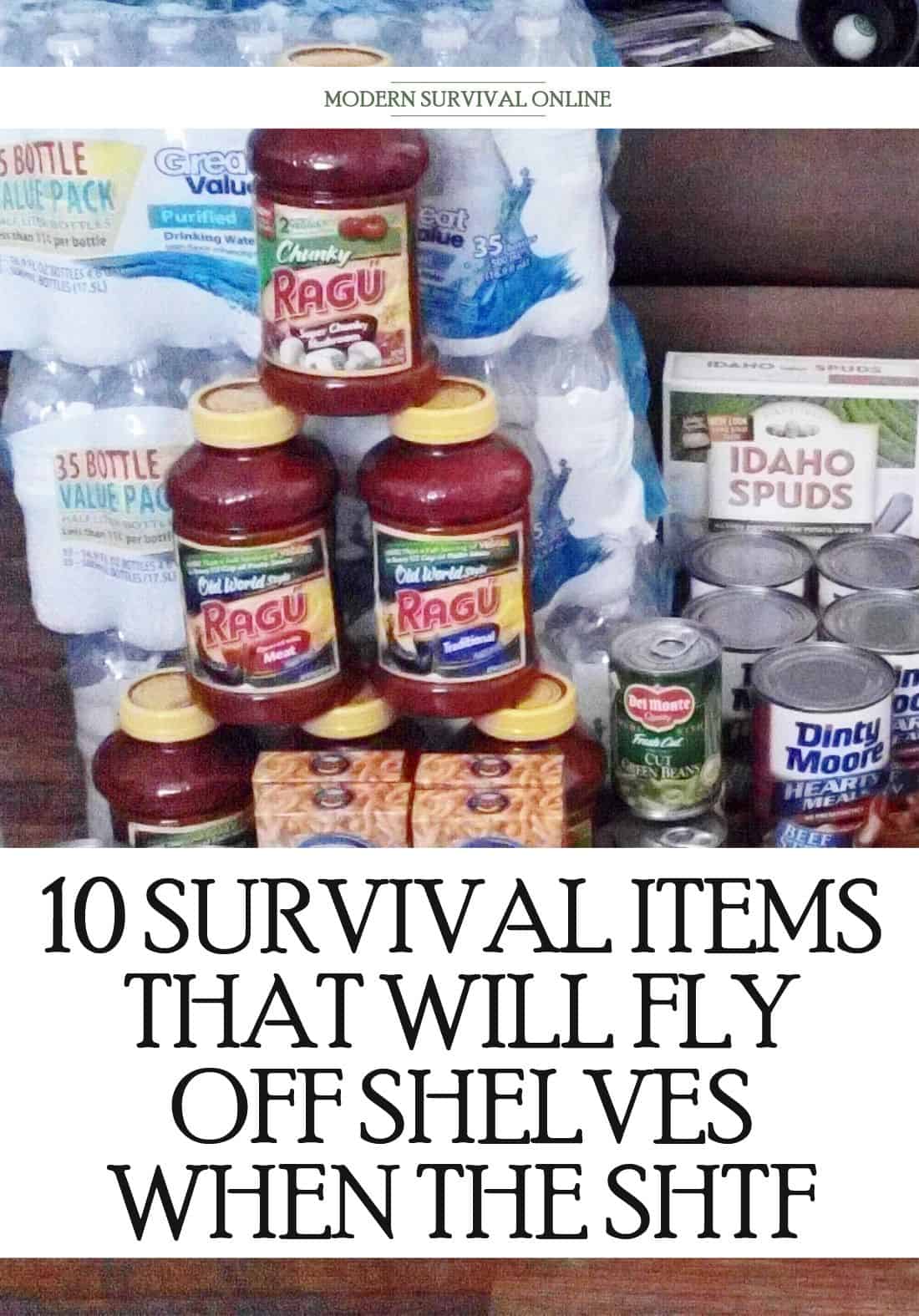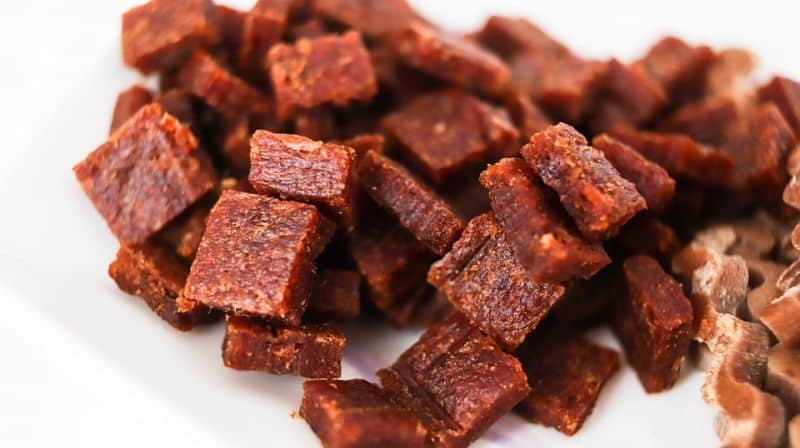Though, in recent years, the United States and Russia have enjoyed amicable, if uneasy, good relations, the question that remains perched on the edge of everyone’s lips is if these two superpowers might yet come to blows overtly.
Though the Russian Bear might be sleeping, as far as the United States is concerned, Russia remains a world power in every sense of the word, one whose star has been ascendant for some time despite the media’s focus on the runaway success of China.
It goes without saying that true, open conflict between superpowers of such stature would have nothing short of grievous consequences for both nations, militarily, economically, and socially.
Though, for some decades now, cooler heads have prevailed, and any honest actors who are saying have a vested interest in avoiding such an outcome, the possibility of such is never truly out of the question.
As both nations move into an increasingly volatile and ever-shifting global political landscape, the portentous question remains: is a “hot” war between the U.S. and Russia possible, and how likely is such an event to occur?
In this article we will explore this question and do our best to assess the variables.
The Lingering Cold War
Most of our readers born before the mid-nineties are entirely acquainted with the Cold War, that period of global tension between Russia and the U.S. that reached a boiling point on the very precipice of thermonuclear war between the two major powers, before thankfully being averted.
Though the exact beginning and duration of the Cold War is disputed among historians and students of the subject, it can generally be said to have begun in the late 1940’s, and lasted clear through the collapse of the Soviet Union in the early 1990’s.
What is indisputable, however, is how the intervening decades of shadow war shaped and continues to shape U.S.-Russia relations today.
The Cold War got its name because it was not a shooting war, or “hot” war.
Instead of being fought directly between the principal belligerents with troops, tanks, bombers and nukes, it was fought through increasingly intricate, elaborate and sometimes downright crazy spy games, the sponsoring of proxy conflicts, economic sanctions, and general meddling in the other’s affairs while maintaining plausible deniability.
Back then, this Cold War escalated, degree by degree, bit by bit, a policy of brinkmanship in slow motion. These subtle moves were arguably designed to stymie the opponent more than they were to advance the interests of the acting nations.
But inevitably the global movement and readying of strategic weapons by both sides, culminating in the Cuban Missile Crisis in 1962, meant that no one was under any Illusions as to the frothing enmity between the two giants.
As such, an entire generation grew up in the shadow of the atom, knowing that death from nuclear fire and indeed a genuine global apocalypse was all too real, even increasingly likely.
But, as fortune or success would have it, the tide turned against Russia and the U.S.S.R. in the aftermath of the crisis, with China, Russia’s communist ideology “sibling” splitting off to pursue their own fortunes, the US making greater headway with allies in Europe and finally the dreadful economic stagnation in the U.S.S.R. following their disastrous blundering in Afghanistan.
In the late 1980’s, cries for sovereignty rising from Soviet vassals in Eastern Europe marked the beginning of the end for the U.S.S.R..
The eventual cessation of the Cold War came only in the wake of the Communist Party of the Soviet Union’s failed attempt to overthrow the government, saw their censure and banning.
Though mercifully over and with Russia in shambles societally, calling the end of any such hostilities a “victory” for one side or the other seems irrelevant; nuclear war was avoided, and with it the world would go on.
As a result, to this very day, the United States and Russia only ever enjoy an uneasy peace, and even joint initiatives always have an air of half-cocked readiness about them; each party shaking with one hand, and keeping the other firmly on their pistols.
Perhaps old habits die hard, but perhaps the world is simply not big enough for both a Bear and an Eagle.
Similar Cultures with Opposing Interests
Upon cursory inspection, you might find it strange that two countries with such overarching similar cultures, at least socially, would find themselves such bitter and sworn enemies for so long.
Though it is true that a significant language barrier exists between the two, the general religious and cultural overtones of the United States and Russia are largely similar.
Even geographically they have more in common than they lack, with both countries essentially being continents unto themselves, and home to many smaller “nations” among the populace, each with their own customs, dialects, and more.
Obviously, among two large and powerful giants, either would prefer to be the very biggest and the most powerful, singularly, and not content to share any given component of their empire with a competitor.
Isn’t there enough to go around? Is greed and a thirst for power really so all-consuming, so pathological among the leaders of men but they would balance the globe on the edge of a knife over a cauldron of nuclear fire?
Perhaps so, and perhaps that will be the graven legacy of mankind yet. And though it might be informative to answer these more grandiose questions, the practical reason is simpler and plenty informative enough.
Simply put, the United States and Russia have opposing interests when it comes to territorial ambition, the establishment of empire and friends lists.
No, I’m not making some joke about social media relations: as often has been the case, the United States has had it in for one country or another that Russia enjoyed good relations with, and vice-versa.
In such cases, as one country or another is making inroads in a nation that the opposite number cares about not at all, they would then certainly, suddenly take an interest in it. This, of course, never with good intentions.
If this sounds a lot like Cold War activity with the volume turned down, you are quite right to think so, and to this very day Cold War-style jockeying for position on the stage of geopolitics continues. Mercifully, though, at intensity far removed from that shadow conflict of the last millennium.
Though it might yet be properly called Cold War II or the Second Cold War, it is accurately and simply “business as usual” between the two venerable superpowers, and since it is business as usual there still exists, however small, the chance that some collision or lesser conflict might invariably domino into outright and proper war.
Lest anyone forget, despite dozens of arms reduction treaties, despite nuclear weapon draw-downs and eliminations, despite a policy of diplomacy and peace, despite the modern emphasis on low-intensity and asymmetric warfare hundreds upon hundreds of titanic nuclear weapons, tactical and strategic, remain armed and ready in the arsenals of both powers.
They sit slumbering in their silos, glide silently through the oceans aboard submarines, and await being hoisted into the bomb bays of jets. They might yet usher in their terrible purpose.
Is Massive Deterrence Enough?
During the Cold War, except for a few perilous days and weeks, most civilians, and indeed many government officials and military officers were content enough living under the shadow of nuclear war because they trusted in the policy of “mutually assured destruction”, or MAD.
The idea that any nuclear strike or any escalation of hostilities that warranted a nuclear strike in retaliation would see both belligerents utterly annihilated thanks to profligate deployments of their foe’s own nuclear weapons.
Back then, the notion of shooting down or otherwise intercepting such weapons reliably was mostly a pipe dream.
Even if it was technically achievable a majority of the time, the law of large numbers meant that plenty of weapons would get through to devastate major population centers, strategic military targets, command and control nerve centers, and of course, government headquarters.
Though the aforementioned nuclear “disarmaments” today have immensely reduced the total number of weapons owned and kept in readiness by the United States and Russia they each still have more than enough to scour the globe in atomic fire.
Militarily it seems unthinkable to not worry over nuclear weapons, at least to the casual observer, but the times they are a-changing, and we must ask ourselves if strategic nuclear capability, including pinpoint and follow-on strike capability, is enough to prevent the outbreak of open war.
Maybe, maybe not. The dawn of fourth-generation warfare has hardly rendered these nuclear weapons irrelevant, but they are now, definitely, a non-starter as far as accomplishing strategic objectives goes in the 21st century.
More likely they would become the final option and “middle finger” available to a losing superpower.
In fact, the current state of affairs might actually be assured by the presence of such weapons, and though they could prevent the next big slam-bang roll-the-tanks war, they have almost certainly greased the groove for an era of perpetual low intensity and asymmetric warfare between the U.S., and Russia for some time to come.
Perpetual but Limited Conflict
As mentioned above, it is “business as usual” to this very day between the United States and Russia, and it shows no signs of relenting anywhere in the near future.
Russia foments hatred against the United States in such places as Iran and even China, though China hardly needs any reasons besides its own to buck relations with the United States.
United States meddling in Georgia, Turkey and former states of the Soviet Union continues to agitate Russia, and they respond in kind, arming groups and providing intelligence to those hostile to the United States or its interests down to the local, small-scale level.
This is really where the rubber meets the road, because as history has shown us time and time again, small and seemingly inconsequential events that are barely worthy of a mention in the D columns of any newspaper have a way of spiraling out of control, and taking on a life all their own.
Like the single coal falling off of a cigarette that results in a raging firestorm or the tumbling of a tiny pebble that inevitably causes a devastating avalanche, these local slap-fights could potentially result in a chain of events that sees smaller and less capable nations call upon their strategic alliances, mutual defense pacts and geographic allies to fight with them or on their behalf.
We already had a taste of this in the recent Syrian conflicts, but after a couple of bloody noses shared by the U.S. and Russia, any conflict more severe was thankfully forestalled. Even limited head-to-head fights of this nature are showing signs of increasing escalation.
Throughout the Trump presidency, America made good on its non-interventionist policy in the Middle East, but with changing regimes comes changing attitudes on implementation of U.S. designs in the region, and once America gets mired in Yet Another Mideast War you can bet Russia will be there, one way or another.
you can bet Russia will be there, one way or another.
One misstep might be enough to once again set both powers on a collision course for open conflict.
Is U.S. Seclusion Enough?
Throughout the modern era, the United States has enjoyed military advantages that very few nations have: incredible amounts of resources, allies with which it has nominally good relations to its north and south, and the massive geographic hurdle and hedge against invasion presented by being flanked by two enormous oceans.
Indeed, trying to put boots on the ground in the United States in any meaningful way has been nothing short of a boondoggle and pipe dream for any nation that might have attempted it.
The United States has always sought to leverage this comparative isolation to ensure safe supply lines, and transit to bases far outside of the conflict zones where it prosecutes its wars in any theater, with those bases typically being hosted by a country neighboring the “invadee” or elsewhere in the region.
The United States is generally highly competent, and that professionalism combined with the typical invulnerability of its logistics train, however massive and lengthy it might be, has assured their success in conflicts around the globe, or if not success at least insulated them from abject failure and terrible losses.
But that invulnerability owed more to the U.S.’s foes lack of capability more than any real unassailability, at least when it comes to in-theater presence.
Changing times means new vulnerabilities and new opportunities for those who would exploit them. Warfare, much like everything else these days, is distributed. Bands of mercenaries and cultivated partisans have replaced contingents of uniformed troops for major powers in many places.
Expensive, difficult to maintain and difficult to operate, strike aircraft and recon platforms have been replaced or at least subverted by modified off-the-shelf drones and cameras.
The higher and higher the technology level of any given piece of equipment, the more vulnerable it is to primitive attack, a maxim that the U.S. is currently struggling with at home during a new wave of prolonged societal unrest and pseudo-revolutionary activity.
One had better believe that the United States’ enemies have certainly observed and learned this lesson, and only a fool would believe that they are not themselves at least partially responsible for instigating the current round of troubles that the U.S. is dealing with.
It is all but a certainty that this type of activity will be scaled up and unleashed along every possible vector both domestically and overseas the next time the U.S. and Russia lock horns for real.
It is not hard to imagine a scenario where the incredibly long and intricate United States supply chain could come under simultaneous attack in multiple places using multiple tactics.
It is already vulnerable to conventional attack, but how much more vulnerable might U.S. bases, installation and infrastructure be to expert-level cyber attacks combined with swarms of suicide drones, and small, sharp direct-action carried out by regular or irregular forces?
How will the U.S. protect itself against sporadic attacks that have virtually no pre-attack signature, ones that inflict massive losses and difficulty out of all proportion with their cost and complexity?
This vulnerability extends far beyond military targets; the United States civil infrastructure, everything from power and transit lines to the public utilities in major cities is generally old, tottering and in need of major overhaul, to say nothing of insulation and protection against a host of modern threats.
As of yet, this overhaul is not forthcoming; the question and the “can” being continually being kicked farther and farther down the road by an increasingly lame Congress that is more than content to persecute their internecine and petty squabbles instead of running the nation.
The United States strategy, if you can call it that, seems to be one of facing inevitability, and banking on absorbing the blow thanks to its immense size more than anything else.
The New Paradigm
The United States is not invulnerable, and in several ways is more vulnerable now than ever if opponents are willing to capitalize on those vulnerabilities.
The old saying that war never changes is patently false in any but the most romantic interpretation; the rules, tools and procedures of war do change, sometimes changing fast and in ways that we cannot expect and can only hope to prepare for as quickly as possible.
The U.S. does not seem to be preparing quickly enough, and to most observers Russia at least does not seem to be too intent to change their way of doing business either, meaning that business-as-usual shall continue.
Massive set-piece battles using swarms of tanks, armored personnel carriers, men and jets are predominantly a thing of the past. Most conflicts are of long duration but low intensity, and marked by sort of inverse proportion of brinkmanship.
The smaller and seemingly weaker power tries to goad a larger power into an overwhelmingly destructive response to comparatively inconsequential actions, thus shifting the sentiment of the public and the world against the larger force.
In essence, and it is a good comparison, the larger power becomes the “bullies” and ergo the bad guys, creating a chain-reaction of negative outcomes among observers and allies alike.
The United States has been reasonably successful in conducting these low intensity operations for a long period of time, but it has come at the cost of an extraordinary amount of treasure and many lives lost for no meaningful game.
In regards to weapons and equipment for force projection, the United States still relies on massive blue water navy ships that, for all their technological marvel and might, are increasingly vulnerable to sophisticated missiles, unmanned drones and other autonomous weapons.
The loss of any such “crown jewel” of the fleet like a carrier could spell disaster and tip the balance of power.
Fighter aircraft too are constant line items when it comes to budgets and funding, and these manned aircraft represent enormous investments financially and logistically that might not produce a return on said investment in any meaningful way compared to an unmanned aircraft of similar make.
Even unmanned aircraft might be categorically replaced or left behind by massed swarms of smaller autonomous drones working in concert as a sort of compound weapon system.
With increasing emphasis on cyber and economic warfare to get things done and move the needle on an objective, the U.S.’s dogged reliance on big budget and “big ticket” tools of war is seemingly puzzling.
An old maxim regarding the military industrial complex informs us that major powers always train and equip to fight the wars of yesteryear, not the wars of tomorrow, at least until they get their ears boxed and lose, but one would hope that the United States at least would recognize the perils of doing so.
Though Russia does not seem terribly keen to capitalize on those vulnerabilities in any meaningful way, at least right now, that does not mean that some other power is not prepared to do so or will not do so. But that, readers, is a discussion for another time.
Conclusion
Despite the trials and tribulations already attendant in the 21st century, and interactions that run from hot to cold before going hot again, Russia and United States seem to have settled into a generally peaceful though not wholly amicable relationship, one still frayed around the edges by the continuation of Cold War-era hostilities via proxy maneuvering.
This is a dance where both partners know the steps by heart and so long as no one steps on the others toes a clash should be avoided.
Nonetheless, it takes little imagination to think of a scenario where the United States and Russia might be dragged inexorably into a war between superpowers.
via Modern Survival Online https://ift.tt/2OXiVi4

 useful for self-defense
useful for self-defense breaking windows
breaking windows improved grip
improved grip useful for batoning wood
useful for batoning wood serrated spine to saw wood
serrated spine to saw wood may have other survival items inside the handle
may have other survival items inside the handle
 you can bet Russia will be there, one way or another.
you can bet Russia will be there, one way or another.

 Pokeweed
Pokeweed



